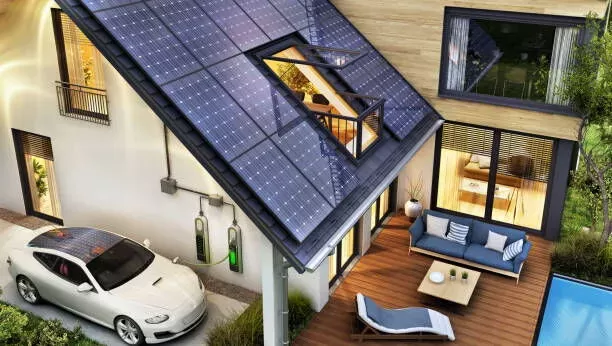Notifications

9 minutes, 18 seconds
-33 Views 0 Comments 0 Likes 0 Reviews

As a professional EV charger manufacturer in China, Topper Company delivers reliable electric vehicle charging station equipment and comprehensive charging solutions.
As the world moves steadily toward a cleaner, more sustainable future, two technologies stand out as essential: electric vehicles (EVs) and solar energy. Each brings substantial environmental and economic benefits on its own. But when combined—through solar EV charging—they create a powerful, low-carbon solution that addresses both climate change and energy independence.
Solar EV charging refers to using electricity generated from solar panels to charge electric vehicles. It unites clean mobility with renewable energy, creating a self-sustaining, zero-emissions ecosystem. With EV ownership on the rise and solar technology becoming more accessible, this pairing is rapidly gaining traction among eco-conscious homeowners, businesses, and governments.
This article explores how solar EV charging works, its benefits, installation steps, and its growing role in shaping the future of transportation.
Solar EV charging uses photovoltaic (PV) panels to convert sunlight into electricity, which is then used to charge an EV. This electricity can be delivered to the vehicle directly during the day or stored in batteries for nighttime or overcast conditions.
At its core, it’s a closed-loop system: you generate your own power and use it to fuel your car—cutting out fossil fuels entirely.
Grid-tied solar systems: Excess solar power is fed into the grid. When solar output is low, electricity is drawn from the grid.
Off-grid systems with battery storage: Solar energy is stored in batteries and used for charging when needed.
Hybrid systems: Combine grid access with battery backup for maximum flexibility.
Installing a solar-powered EV charging station at home is one of the smartest ways to reduce your carbon footprint and energy costs. With the right setup, your EV becomes a truly solar-powered vehicle—fueled by clean, renewable sunlight.
Solar system size: Most home systems range from 5 kW to 15 kW. Larger systems can cover both household electricity use and EV charging.
Charger type: Residential setups typically use Level 2 chargers, offering 3.3 kW to 22 kW charging speeds—much faster than Level 1.
Driving habits: How far you drive each day affects how much solar energy you'll need.
Sunlight availability: Solar output is highest mid-day. Smart chargers can align charging times with peak solar production.
Here’s a simplified overview of the installation process:
A solar installer evaluates your roof for orientation, shading, and structural integrity. South-facing roofs are ideal. They’ll also estimate your energy needs and recommend a system size.
Select a solar-compatible Level 2 charger, ideally with smart features like solar prioritization. You’ll also need an inverter to convert solar DC power into AC—hybrid inverters are best if you're adding a battery.
Installers mount the solar panels at an optimal tilt (usually 18°–36° depending on your location) to capture the most sunlight.
An electrician connects the system to your home’s electrical panel. If you're adding a battery, it’s installed and integrated at this point.
The charger is mounted—usually in the garage or driveway—and connected to both the main panel and the solar system for seamless operation.
Smart EV chargers detect when your solar panels are producing surplus electricity and automatically begin charging your EV. These chargers can also:
Delay charging until solar output is high
Pause charging when sunlight is low
Incorporate real-time electricity pricing or weather forecasts to optimize energy use
Charging with solar energy means zero-emission driving and charging, delivering major environmental advantages:
Reduced carbon footprint: Solar EV charging can lower your household CO₂ emissions by several tons annually.
Cleaner air: Fewer emissions improve urban air quality and reduce pollution-related health risks.
Solar charging can drastically reduce your energy bills over time:
Lower electricity costs: While grid electricity averages ~$0.16/kWh in the U.S., solar can reduce this to under $0.05/kWh.
Avoid public charging fees: Public Level 2 chargers often cost $0.30–$0.40/kWh.
Government incentives: Federal and local programs can cover up to 30% or more of installation costs.
A driver traveling 1,500 miles/month in an EV that uses 3.5 miles per kWh requires ~429 kWh/month.
Grid charging cost: 429 × $0.16 = $68.64/month
Solar charging cost: At $0.05/kWh, that’s just $21.45/month
That’s a 70% savings—or over $10,000 over 10 years.
Many utilities now use TOU pricing, charging more during peak demand hours. With solar EV charging, you can:
Charge mid-day when solar production is highest and rates are lowest
Avoid charging during expensive evening hours
Further reduce reliance on the grid
Battery systems like the Tesla Powerwall or Enphase IQ can store excess solar energy for use at night or during outages.
24/7 solar charging: Power your EV after sunset
Energy independence: Keep charging during blackouts
TOU optimization: Use stored energy when grid prices spike
Businesses, schools, and cities are increasingly installing solar EV charging stations—often using solar canopies that double as shaded parking structures.
Sustainability branding: Demonstrates environmental leadership
Energy savings: Cuts utility bills and peak demand charges
Customer attraction: EV drivers prefer businesses with free or low-cost charging
The technology is evolving rapidly, with exciting innovations on the horizon:
Vehicle-to-grid (V2G): EVs supplying power back to the grid
Portable solar chargers: For emergency or remote charging
AI energy management: Systems that learn usage patterns, weather, and rates to optimize energy flow
As costs decline and efficiency rises, solar EV charging will become a cornerstone of the decarbonized energy landscape.
Solar EV charging represents more than a clean energy solution—it’s a shift in how we live, drive, and power our world. By integrating solar energy and electric vehicles, individuals and communities can reduce costs, cut emissions, and create a more resilient energy future.
For homeowners, businesses, and governments, investing in solar EV charging isn’t just environmentally responsible—it’s economically smart and future-ready.
The future of transportation is here—and it's powered by the sun.Know more about Google SEO Directory
China EV Chargers EV Charger Manufacturer EV Charging Solutions

